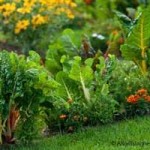
Frankenfood
By Catherine Haug, July 2016 (Image, right, from Organic Consumers Association, used with permission)
We have all worked so hard to defeat the DARK Act – the bill that kept coming back, written by Monsanto and other chemical and seed companies. It’s all been for naught, as the most recent version, a so-called compromise bill sponsored by a Republican and a Democrat, was passed by both houses and signed by our President.
I’ve copied a message below, originally from the White House about the bill for your reference. I’m so bummed. Those of us who want mandatory GMO labeling in clear words (not QR codes or telephone numbers) now have serious work to do. Plus the new law allows some GMO ingredients not to be labeled, and also allows GMO seeds not to be labeled. What’s up with that?
The US Department of Agriculture (USDA) now has the responsibility to implement the law. This includes undertaking a study to determine whether consumers – we the people – face challenges related to our access to electronic disclosures (read the attached email for more)/
We, the consumers, have a responsibility to make sure the USDA knows we don’t like this plan and we have trouble discerning what does/does not contain GMO ingredients. (more…)



